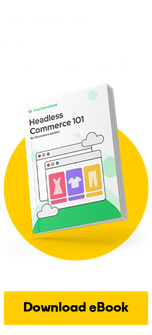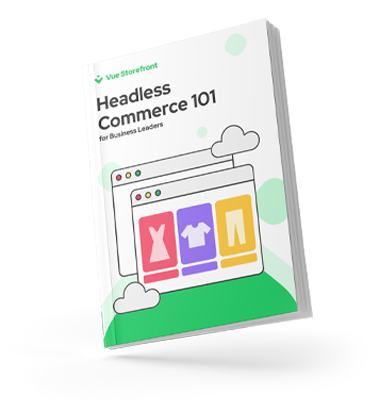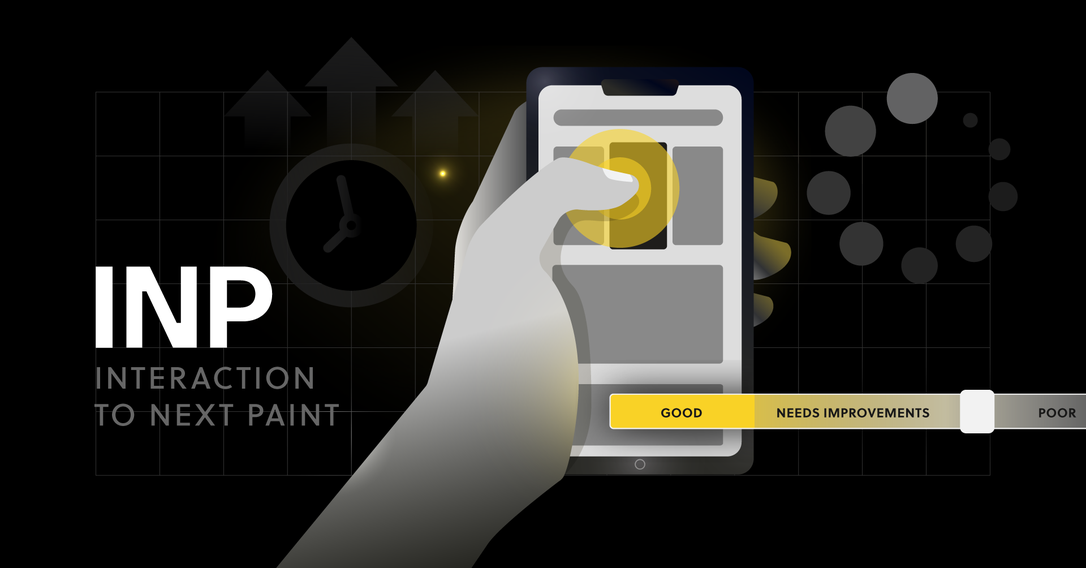6 min
July 30, 2025
UX vs UI Design: Similarities, Differences, and Their Importance for E-commerce
The terms UX (User Experience) and UI (User Interface) are often confused, even though they pertain to different aspects of digital design. Understanding the distinctions between UX and UI, as well as their shared similarities, is fundamental to creating intuitive and conversion-driving online stores.
In this article, you will learn:
What UX is,
What UI is,
What their similarities and differences are.
You'll also understand how their collaboration can impact the growth of your e-commerce business.
Listen to the audio version of this article.
What is UX (User Experience)?
UX (User Experience) refers to the overall experience a user has while interacting with your digital product, such as an online store. The goal of UX is to ensure smooth and effective use of the application. UX design involves understanding user needs, analyzing their behavior, and creating pathways that lead to business goals, like purchasing a product.
Key aspects of UX design include:
Usability: Can the user easily find the product? Is the navigation intuitive?
Accessibility: Is the website user-friendly for people with disabilities, for example, by complying with WCAG standards?
Satisfaction: Does the interaction evoke positive emotions, building brand loyalty?
Usefulness: Does the website provide relevant information, such as detailed product descriptions?
Example: A customer plans to buy a TV from your store. Well-designed UX streamlines their actions – allowing them to find a model, compare specifications, and proceed to checkout in just a few clicks, without frustration. If the process is too complicated, the user might abandon their cart, which increases the bounce rate.
To learn more about UX, read the post below:
What is UI (User Interface)?
UI (User Interface) design refers to the interactive and visual part of your website. It includes everything the user sees and interacts with: buttons, colors, typography, icons, animations, and page layout. UI design revolves around aesthetics and intuitiveness, ensuring the interface layer is easy to use and visually appealing.
UI is therefore responsible for:
Aesthetics: Does the website look modern and professional? Are the colors consistent with the brand identity?
Interactivity: Are the buttons clear and inviting to click?
Visual Consistency: Are fonts, icons, and elements uniform throughout the site?
Responsiveness: Does the interface work smoothly on various devices (desktop, tablet, smartphone)?
Example: On a TV website, a UI designer creates clear buttons, attractive product images, and a clean category layout, making the purchasing path easily visible to the customer.
To learn more about UI, check out the post below:
Similarities and Differences Between UI and UX
Some believe that UI (User Interface) is a component of UX (User Experience). Others argue that UX and UI are closely related as two distinct branches. However, their collaboration is undeniably essential for creating an effective online store.
User experience design is like the foundation and layout of a house – it ensures comfort, functionality, and structural integrity. User interface design is the decorations and interior design – it adds warmth and creates that cozy atmosphere.
Without good UX, even the most beautiful interface will be useless. Conversely, without refined UI, a brilliantly designed UX might fail to capture the user's attention.
Here are the key differences between UI and UX:

Similarities Between UX and UI:
Shared Goal: Creating a digital product tailored to customer needs.
Collaboration: UX and UI should work in harmony – UX designs the user journey, and UI gives it an accessible form.
Business Impact: When correlated, they lead to higher conversions, lower bounce rates, and greater customer loyalty.
SEO: The integration of UX and UI improves time spent on the page, reduces bounce rate, and supports Core Web Vitals, which positively impacts Google search rankings.
As you can see, regardless of whether they are one entity or two separate ones, UX design and UI design permeate and complement each other. Their correlation is key to the success of any website.
Why Are UX and UI Design Crucial for E-commerce?
In online retail, UX (User Experience) and UI (User Interface) design are indispensable. They play a pivotal role in attracting and retaining customers. Here are the main benefits:
Increased Conversions: An intuitive purchasing process (UX) and clear CTA (Call to Action) buttons (UI) encourage users to complete transactions.
Reduced Bounce Rate: Understandable navigation (UX) and aesthetic design (UI) make users spend more time on the site.
Building Trust: A professional appearance (UI) and a seamless experience (UX) boost brand credibility.
Competitive Advantage: Stores optimized for UX and UI design stand out in the market.
Example: The "$300 Million Button" case study illustrates how changing a button from "Register" to "Continue" (a combination of UX and UI) increased e-commerce conversions by millions of dollars. The UX designer identified the problem (the registration requirement deterred users), and the UI designer designed an intuitive button.
UX Designer vs UI Designer - Differences and Similarities
These are key specialists in e-commerce design, but their roles differ significantly:

The Role of a UX Designer
A UX designer focuses on user research, creating customer journey maps, designing wireframes, and conducting usability tests. A UX designer also analyzes data (e.g., from Google Analytics) to identify friction points, such as an overly complicated purchasing process. In e-commerce, they are responsible for optimizing the path from Browse products to finalizing a transaction.
UX Designer Tools:
UX Designer's Tools:
Dynamic Yield
Description: A personalization platform that analyzes customer actions in real-time, generating personalized product recommendations, content, and optimizing user experience (UX). It integrates with popular CMS platforms like Storyblok, Shopify, and Magento, helping to boost conversions through personalized banners and recommendations on the homepage and in the cart.
Documentation: Dynamic Yield Documentation
Algolia
Description: An advanced AI-powered search and recommendation engine that instantly understands intent and offers personalized results. It improves product search (supporting text, visual, and voice queries) and provides "customers also bought" recommendations. It's ideal for stores with large product catalogs.
Documentation: Algolia Documentation
Constructor.io
Description: An AI application that personalizes search results and recommendations in real-time, taking into account customer data and context. It delivers personalized product recommendations and search results, increasing conversions and time spent on the site.
Documentation: Constructor Documentation
Dynamic Yield
Description: A personalization platform that analyzes customer actions in real-time, generating personalized product recommendations, content, and optimizing user experience (UX). It integrates with popular CMS platforms like Storyblok, Shopify, and Magento, helping to boost conversions through personalized banners and recommendations on the homepage and in the cart.
Documentation: Dynamic Yield Documentation
Algolia
Description: An advanced AI-powered search and recommendation engine that instantly understands intent and offers personalized results. It improves product search (supporting text, visual, and voice queries) and provides "customers also bought" recommendations. It's ideal for stores with large product catalogs.
Documentation: Algolia Documentation
Constructor.io
Description: An AI application that personalizes search results and recommendations in real-time, taking into account customer data and context. It delivers personalized product recommendations and search results, increasing conversions and time spent on the site.
Documentation: Constructor Documentation
What Does a UI Designer Do?
A UI designer is responsible for designing visually appealing layouts, selecting a consistent color palette, and creating interactive elements. The UI designer determines how elements like the "Buy Now" button or navigation menu will look, ensuring users want to interact with them.
UI Designer Tools:
Narzędzia projektanta UI:
Dynamic Yield
Description: A personalization platform that analyzes customer actions in real-time, generating personalized product recommendations, content, and optimizing user experience (UX). It integrates with popular CMS platforms like Storyblok, Shopify, and Magento, helping to boost conversions through personalized banners and recommendations on the homepage and in the cart.
Documentation: Dynamic Yield Documentation
Algolia
Description: An advanced AI-powered search and recommendation engine that instantly understands intent and offers personalized results. It improves product search (supporting text, visual, and voice queries) and provides "customers also bought" recommendations. It's ideal for stores with large product catalogs.
Documentation: Algolia Documentation
Constructor.io
Description: An AI application that personalizes search results and recommendations in real-time, taking into account customer data and context. It delivers personalized product recommendations and search results, increasing conversions and time spent on the site.
Documentation: Constructor Documentation
Dynamic Yield
Description: A personalization platform that analyzes customer actions in real-time, generating personalized product recommendations, content, and optimizing user experience (UX). It integrates with popular CMS platforms like Storyblok, Shopify, and Magento, helping to boost conversions through personalized banners and recommendations on the homepage and in the cart.
Documentation: Dynamic Yield Documentation
Algolia
Description: An advanced AI-powered search and recommendation engine that instantly understands intent and offers personalized results. It improves product search (supporting text, visual, and voice queries) and provides "customers also bought" recommendations. It's ideal for stores with large product catalogs.
Documentation: Algolia Documentation
Constructor.io
Description: An AI application that personalizes search results and recommendations in real-time, taking into account customer data and context. It delivers personalized product recommendations and search results, increasing conversions and time spent on the site.
Documentation: Constructor Documentation
Collaboration between UX and UI
Collaboration between UX and UI designers is crucial – the UX designer creates structures and tests the concept, while the UI designer gives it visual form. In turn, the UI designer can return to UX with suggestions resulting from, for example, technical limitations or feedback from the dev team. UI designers are also often responsible for creating design systems – libraries of components and styles – which increase consistency and facilitate interface scaling.
What about the hybrid role?
In many teams – especially in startups – UX and UI responsibilities are combined. This gives rise to positions such as UX/UI Designer or Product Designer, which combine research, design, and testing in one person.
How Do UI and UX Design Impact SEO?
The similarities in the context of SEO are clear: both fields influence metrics that Google considers when ranking pages:
UX and SEO:
Time on Page: Intuitive navigation increases the time users spend in your store.
Bounce Rate: Usable pages reduce the bounce rate, signaling page value to Google.
Core Web Vitals: Loading speed, responsiveness, and visual stability directly affect rankings.
UI and SEO:
Aesthetics: An attractive user interface encourages interaction, increasing engagement.
Readability: Appropriate typography and contrast facilitate content consumption, which Google appreciates.
Best Practices for UX and UI in E-commerce
Here are practical tips on how to refine UX and UI in your business:
UX - Practical Solutions:
Minimize purchase steps: Remove unnecessary fields in forms and allow guest checkout.
Personalization: Use user data to recommend products aligned with their interests.
Usability testing: Regularly test your site to find friction points.
Responsiveness: Ensure your site works smoothly on all devices.
UI - Practical Solutions:
Clear CTAs: Design buttons that stand out in color and are easy to spot.
Visual consistency: Use a uniform color palette and fonts consistent with your branding.
Microinteractions: Add subtle animations, like button highlights on hover.
Modern trends: Consider dark mode or parallax effects for greater appeal.
Example: At Agrosimex, we implemented headless e-commerce architecture, which allowed for:
Increase in conversion rate by 23% within 12 months
Greater flexibility in interface design
Competition Analysis – How to Stand Out?
To gain an edge over the competition, analyze their approach to UX and UI:
Dynamic Yield
Description: A personalization platform that analyzes customer actions in real-time, generating personalized product recommendations, content, and optimizing user experience (UX). It integrates with popular CMS platforms like Storyblok, Shopify, and Magento, helping to boost conversions through personalized banners and recommendations on the homepage and in the cart.
Documentation: Dynamic Yield Documentation
Algolia
Description: An advanced AI-powered search and recommendation engine that instantly understands intent and offers personalized results. It improves product search (supporting text, visual, and voice queries) and provides "customers also bought" recommendations. It's ideal for stores with large product catalogs.
Documentation: Algolia Documentation
Constructor.io
Description: An AI application that personalizes search results and recommendations in real-time, taking into account customer data and context. It delivers personalized product recommendations and search results, increasing conversions and time spent on the site.
Documentation: Constructor Documentation
Dynamic Yield
Description: A personalization platform that analyzes customer actions in real-time, generating personalized product recommendations, content, and optimizing user experience (UX). It integrates with popular CMS platforms like Storyblok, Shopify, and Magento, helping to boost conversions through personalized banners and recommendations on the homepage and in the cart.
Documentation: Dynamic Yield Documentation
Algolia
Description: An advanced AI-powered search and recommendation engine that instantly understands intent and offers personalized results. It improves product search (supporting text, visual, and voice queries) and provides "customers also bought" recommendations. It's ideal for stores with large product catalogs.
Documentation: Algolia Documentation
Warto cyklicznie aktualizować analizę konkurencji – rynek e-commerce dynamicznie się zmienia. Regularny UX audit pozwala utrzymać przewagę.
UX vs. UI in Your E-commerce
In summary, UX focuses on the user experience, ensuring functionality and usability. UI concentrates on the visual layer, attracting attention with aesthetics. The distinctions between UX and UI are clear, but their integration is key to e-commerce success. Collaboration between UX and UI allows you to create a store that functions flawlessly and looks professional, increasing conversions and improving SEO.
Need support with UX and UI? Contact us! Click the black button below labeled "Ask for a quote."





